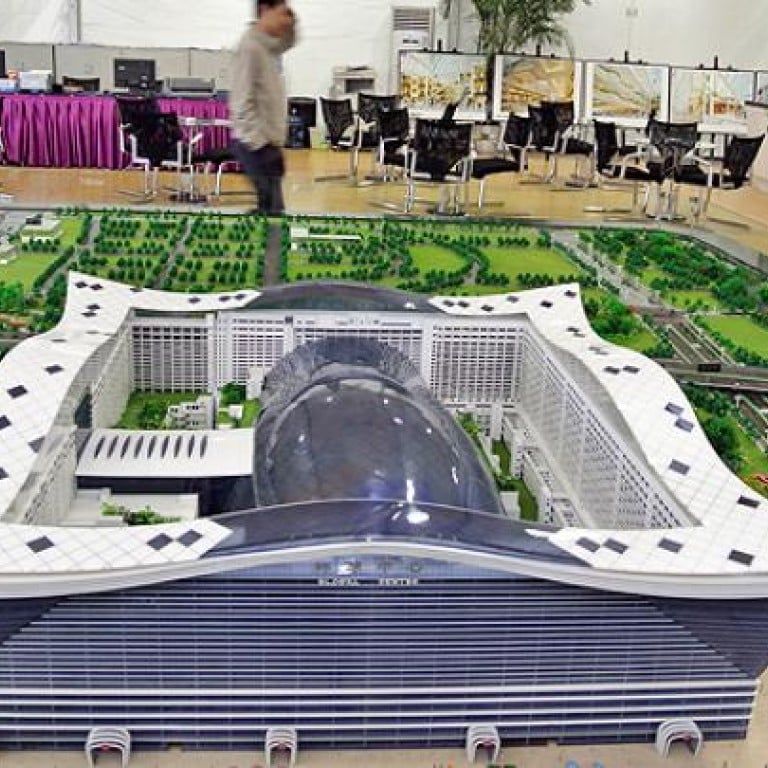
Stately pleasure dome rises in China’s Chengdu
A thousand kilometres from the nearest coast a towering glass wave rolls over the plains of Sichuan, the roof of what Chinese officials say will be the world’s largest standalone structure.
The 100-metre-high “New Century Global Centre” is a symbol of the spread of China’s boom, 500 metres long and 400 metres wide, with 1.7 million square metres of floor space, big enough to hold 20 Sydney Opera Houses according to local authorities.
By comparison the Pentagon in Washington – still one of the world’s largest office buildings – is barely a third of the size with a mere 600,000 square metres of floor space.
The Global Centre is just a few kilometres from the US consulate where the police chief of Chongqing fled to seek asylum, triggering the fall of his patron Bo Xilai and exposing the biggest scandal to rock China’s Communist Party for years.
But it represents a different side of China, where lower costs and government subsidies are still fuelling double-digit growth in Chengdu, the capital of Sichuan province.
The city of 14 million people plans to expand its subway from two lines to 10 by 2020, build a new airport and become a new Silicon Valley.
The Global Centre will house offices, conference rooms, a university complex, two commercial centres, two five star hotels, an IMAX cinema, a “Mediterranean village”, a skating rink and a pirate ship, among other attractions.
About 400,000 square metres will be devoted to shopping, most of the outlets high-end luxury brands.
Despite Chengdu being around 1,000 kilometres from the sea the complex has a marine theme, with fountains, a huge water park and an artificial beach, accented by the undulating roof, meant to resemble a wave.
“This is an ocean city built by man,” said guide Liu Xun. “There will be 1,000 rooms (in the hotel) and all will have seaside views.”
The thick smog that normally blankets Chengdu risks making it a sunless sea, but visitors will not need to worry about that, she said.
“We have borrowed a Japanese technique. There will be an artificial sun that will shine 24 hours a day and allow for a comfortable temperature,” Liu said. The system uses specialised lighting technology that heats as well as illuminates.
The centrepiece will be a 5,000 square metre artificial beach, to include a rafting course and a “seafront” promenade, complete with parasols and seafood outlets that can accommodate 6,000 people.
A giant screen 150 metres long and 40 high will form the horizon and offer sunrises and sunsets, accompanied by nautical breezes.
The exterior facade is near completion and an army of workers are rushing to finish the Chinese-designed building in time for a June next year international forum hosted by US magazine .
China’s incoming president Xi Jinping is expected to attend the event and meet the heads of some of the world’s biggest multinationals.
Another enormous building is planned across the road. Award-winning British-Iraqi architect Zaha Hadid’s Chengdu Contemporary Arts Centre is to include a theatre, an opera house and a museum.
In a video developers China Exhibition and Travel Group describe Chengdu as a “world class modern city of idyllic beauty”, and say the Global Centre – including restaurants serving “the rarest oceanic fish species” – will bring to mind “the fabulous heavens”.
It is, they say, “a landmark which commands the world and is looked upon by the world with respect”.
